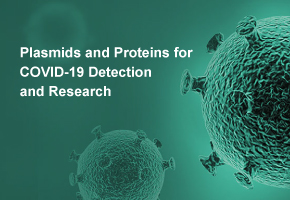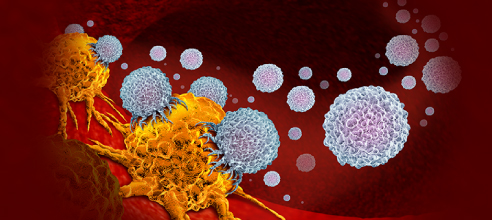Genetic Purity Testing in Seeds: Ensuring Crop Integrity from the Start
Why Genetic Purity Matters
Every successful crop begins with a seed — and not just any seed, but one that is genetically true to its variety. Genetic purity refers to the degree to which a seed lot conforms to its stated genetic identity, free from unwanted admixtures or off-types. Maintaining high purity is vital because even a small amount of contamination can change key traits such as yield, maturity, color, or disease resistance.
For farmers and seed producers, ensuring seed purity is about more than just meeting certification standards—it’s about protecting yield potential, maintaining market reputation, and preserving consumer trust. Hybrid seed production, in particular, relies on precise parental line management, and any genetic impurity can compromise the entire crop cycle.
What Is Genetic Purity Testing?
Genetic purity testing is the process used to verify whether seeds of a particular variety or hybrid are genetically uniform and identical to the parent stock. The test helps identify contamination caused by cross-pollination, mechanical mixing, or mutations. It plays a critical role in seed certification, plant breeding programs, and quality assurance systems.
Depending on the crop type and available technology, several methods can be used to evaluate purity — ranging from traditional field tests to advanced molecular techniques.
Common Methods of Genetic Purity Testing
Method | Principle | Key Advantages | Limitations |
Grow-Out Test (GOT) | Plants are grown to maturity and visually compared to standard parental lines | Inexpensive, simple | Time-consuming, environment-dependent |
Electrophoresis (Protein or Isozyme Analysis) | Detects biochemical differences among varieties | Faster than GOT, moderate cost | Limited resolution for closely related varieties |
DNA Marker-Based Tests (RAPD, SSR, SNP, etc.) | Detects genetic variation at the DNA level | Highly accurate, rapid, environment-independent | Requires equipment and expertise |
Hybrid Purity by Molecular Assays | Confirms the genetic integrity of F1 hybrids using parental markers | High precision, suitable for hybrid crops | Costlier, requires reference profiles |
Each of these methods serves a unique role. While Grow-Out Tests remain the official standard in many certification systems, molecular marker-based tests are now considered the most reliable for hybrid seed production and R&D.
The Role of Genetic Purity in Seed Quality Assurance
Seed companies invest heavily in maintaining the genetic integrity of their breeding materials. The genetic purity test acts as a final checkpoint before seeds reach the market. High genetic purity ensures that every farmer planting a specific hybrid or variety gets the same predictable performance — in terms of yield, uniformity, and stress tolerance.
For example:
l In hybrid maize, just 1–2% impurity can lead to significant yield reduction and uneven maturity.
l In vegetable crops like tomato or chili, contamination may alter fruit size, color, or disease resistance.
l For certified seeds, most national standards require a minimum of 98–99% genetic purity, depending on the crop species.
Thus, purity testing is not only a technical requirement but a direct measure of product value.
Advantages of Molecular-Based Purity Testing
Modern molecular tools, such as SSR (Simple Sequence Repeats) and SNP (Single Nucleotide Polymorphism) analysis, have transformed how purity is verified. These tests can detect even subtle genetic differences that visual inspection might miss.
Key advantages include:
l Speed: Results can be obtained within days, unlike field-based tests that may take months.
l Precision: DNA-level testing eliminates environmental bias.
l Scalability: Multiple samples can be analyzed simultaneously.
l Traceability: Provides digital genetic fingerprints for long-term quality assurance.
These innovations make molecular testing ideal for seed certification, trait validation, and parent line management.
Challenges and Considerations
Despite its advantages, genetic purity testing is not without challenges. Molecular techniques require skilled personnel and access to laboratory infrastructure. Establishing reliable reference profiles for each variety is essential, especially in hybrid programs where parental lines change frequently. Moreover, genetic drift and mutations over time can cause subtle differences even within the same line, requiring continuous monitoring.
Future Perspectives
The future of seed purity testing is moving toward automation, digital data management, and integration with breeding programs. Next-generation sequencing (NGS) and high-throughput genotyping are being explored for large-scale purity verification. Portable DNA analyzers may soon enable on-site purity checks at seed production fields, reducing turnaround time and improving supply chain transparency.
Conclusion
Maintaining genetic purity in seeds is the cornerstone of modern agriculture. Through advanced testing methods, seed producers can guarantee that every seed planted in the field is true to its genetic potential. As agriculture faces increasing pressure for higher yields, sustainability, and quality, genetic purity testing ensures that progress begins at the very first step — with the seed itself.
Ultimately, purity testing protects not just crops but the trust between breeders, farmers, and consumers. In a world where genetic precision drives performance, purity is not an option — it is a promise.
- Like
- Reply
-
Share
About Us · User Accounts and Benefits · Privacy Policy · Management Center · FAQs
© 2025 MolecularCloud



